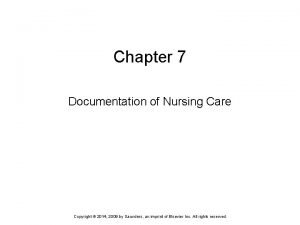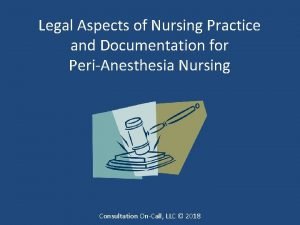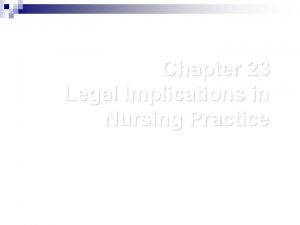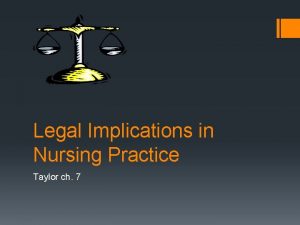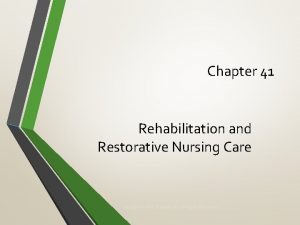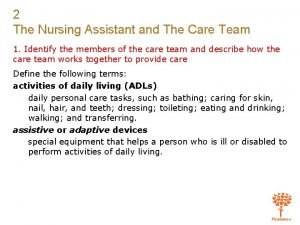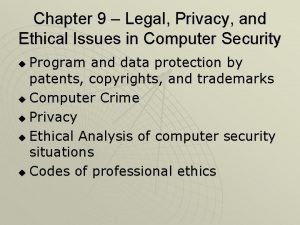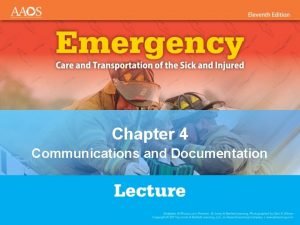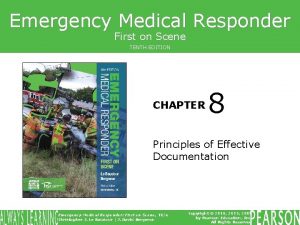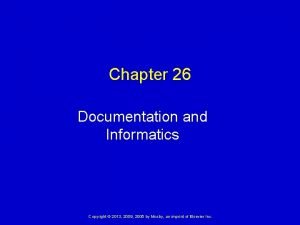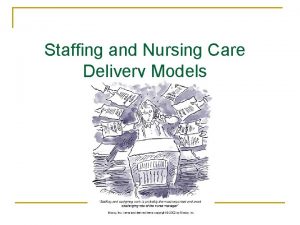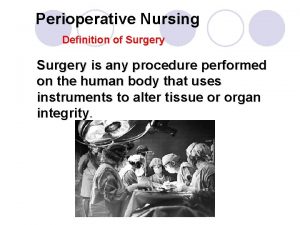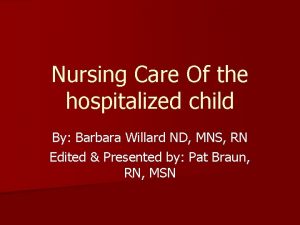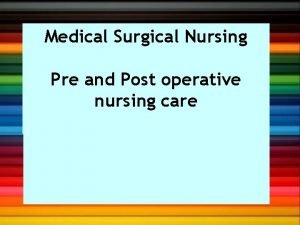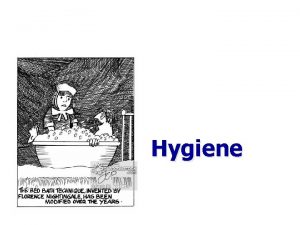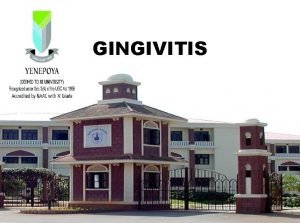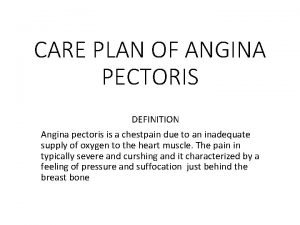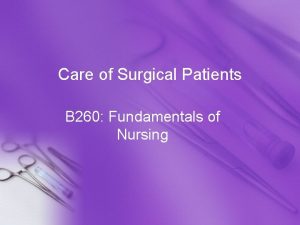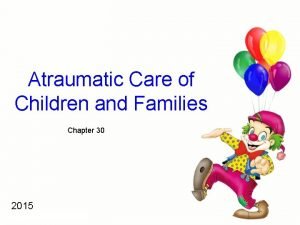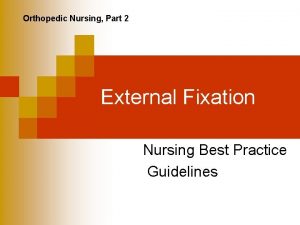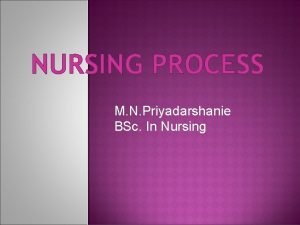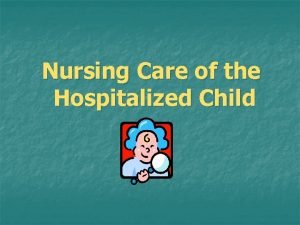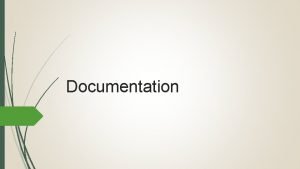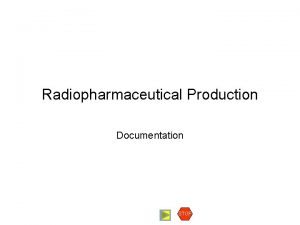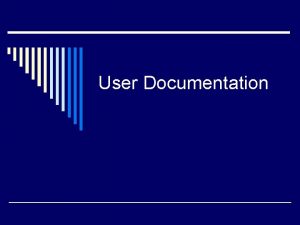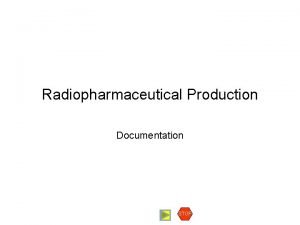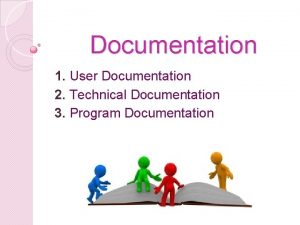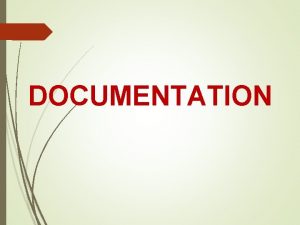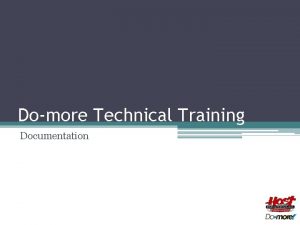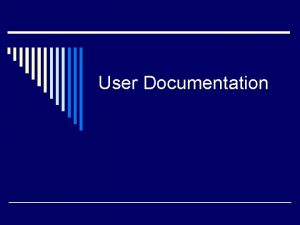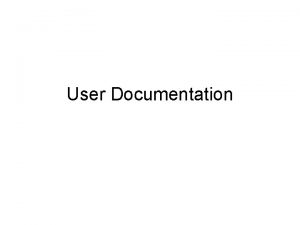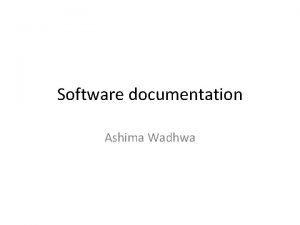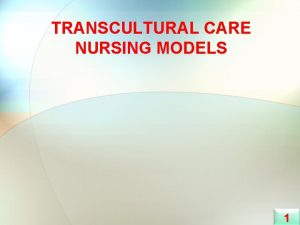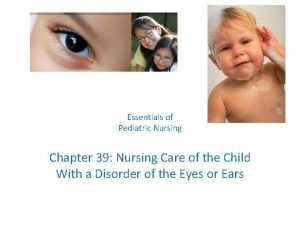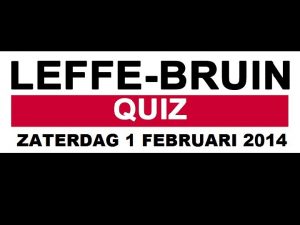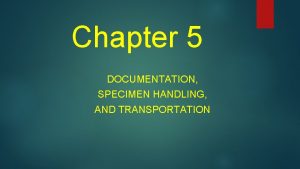Chapter 7 Documentation of Nursing Care Copyright 2014







































- Slides: 39

Chapter 7 Documentation of Nursing Care Copyright © 2014, 2009 by Saunders, an imprint of Elsevier Inc. All rights reserved.

Chapter 7 Lesson 7. 1 Copyright © 2014, 2009 by Saunders, an imprint of Elsevier Inc. All rights reserved.

Learning Objectives Theory 1) Identify three purposes of documentation. 2) Correlate the nursing process with the process of charting. 3) Discuss maintaining confidentiality and privacy of paper or electronic medical records. 4) Compare and contrast the five main methods of written documentation. Clinical Practice 1) Correctly make entries on a daily care flow sheet Copyright © 2014, 2009 by Saunders, an imprint of Elsevier Inc. All rights reserved. Slide 3

Purposes of Documentation Provides a written record of the history, treatment, care, and response of the patient while under the care of a health care provider Is a guide for reimbursement of costs of care May serve as evidence of care in a court of law Shows the use of the nursing process Provides data for quality assurance studies Copyright © 2014, 2009 by Saunders, an imprint of Elsevier Inc. All rights reserved. Slide 4

Purposes of Documentation(cont’d) Is a legal record that can be used as evidence of events that occurred or treatments given Contains observations by the nurses about the patient’s condition, care, and treatment delivered Shows progress toward expected outcomes Copyright © 2014, 2009 by Saunders, an imprint of Elsevier Inc. All rights reserved. Slide 5

Documentation and the Nursing Process Written nursing care plan or interdisciplinary care plan is framework for documentation Charting organized by nursing diagnosis or problem Implementation of each intervention documented on flow sheet or in nursing notes Evaluation statements placed in nurse’s notes and indicate progress toward the stated expected outcomes and goals Copyright © 2014, 2009 by Saunders, an imprint of Elsevier Inc. All rights reserved. Slide 6

The Medical Record Contains data about patient’s stay in a facility Only health care professionals directly caring for the patient, or those involved in research or teaching, should have access to the chart Patient information should not be discussed with anyone not directly involved in the patient’s care Copyright © 2014, 2009 by Saunders, an imprint of Elsevier Inc. All rights reserved. Slide 7

Methods of Documentation (Charting) Source-oriented (narrative) charting Problem-oriented medical record (POMR) charting Focus charting Charting by exception Computer-assisted charting Case management system charting Copyright © 2014, 2009 by Saunders, an imprint of Elsevier Inc. All rights reserved. Slide 8

Source-Oriented or Narrative Charting Organized according to source of information Separate forms for nurses, physicians, dietitians, and other health care professionals to document assessment findings and plan the patient’s care Narrative charting requires documentation of patient care in chronologic order Copyright © 2014, 2009 by Saunders, an imprint of Elsevier Inc. All rights reserved. Slide 9

Source-Oriented or Narrative Charting (cont’d) Advantages Ø Information in chronologic order Ø Documents patient’s baseline condition for each shift Ø Indicates aspects of all steps of the nursing process Disadvantages Ø Documents all findings: makes it difficult to separate pertinent from irrelevant information Ø Requires extensive charting time by the staff Ø Discourages physicians and other health team members from reading all parts of the chart Copyright © 2014, 2009 by Saunders, an imprint of Elsevier Inc. All rights reserved. Slide 10

Example of Source-Oriented (Narrative Charting) Copyright © 2014, 2009 by Saunders, an imprint of Elsevier Inc. All rights reserved. Slide 11

Problem-Oriented Medical Record Charting (POMR) Focuses on patient status rather than on medical or nursing care Five basic parts: database, problem list, plan, progress notes, and discharge summary Copyright © 2014, 2009 by Saunders, an imprint of Elsevier Inc. All rights reserved. Slide 12

Problem-Oriented Medical Record Charting (POMR) (cont’d) Advantages Documents care by focusing on patients’ problems Ø Promotes problem-solving approach to care Ø Improves continuity of care and communication by keeping relevant data all in one place Ø Allows easy auditing of patient records in evaluating staff performance or quality of patient care Ø Copyright © 2014, 2009 by Saunders, an imprint of Elsevier Inc. All rights reserved. Slide 13

Problem-Oriented Medical Record Charting (POMR) (cont’d) Disadvantages Results in loss of chronologic charting Ø More difficult to track trends in patient status Ø Fragments data because more flow sheets required Ø Copyright © 2014, 2009 by Saunders, an imprint of Elsevier Inc. All rights reserved. Slide 14

PIE Charting P—problem identification I—interventions E—evaluation Follows the nursing process and uses nursing diagnoses while placing the plan of care within the nurses’ progress notes Copyright © 2014, 2009 by Saunders, an imprint of Elsevier Inc. All rights reserved. Slide 15

Example of PIE (Problem, Intervention, Evaluation) Charting Copyright © 2014, 2009 by Saunders, an imprint of Elsevier Inc. All rights reserved. Slide 16

Question 1 Monica, a nurse in the operating room, knows that charting must be all of the following except: 1) 2) 3) 4) subjective. accurate. brief. complete. Copyright © 2014, 2009 by Saunders, an imprint of Elsevier Inc. All rights reserved. Slide 17

Chapter 7 Lesson 7. 2 Copyright © 2014, 2009 by Saunders, an imprint of Elsevier Inc. All rights reserved.

Lesson Objectives Theory 4) Compare and contrast the five main methods of written documentation. (continued) 5) List the legal guidelines for recording on medical records. 6) Relate the approved way to correct entries in medical records that were made in error. Copyright © 2014, 2009 by Saunders, an imprint of Elsevier Inc. All rights reserved. Slide 19

Lesson Objectives Clinical Practice 2) 3) 4) 5) Document the characterization of signs or symptoms in a sample charting situation. Use a systematic way of charting to ensure that all pertinent information has been included. Apply the general charting guidelines in the clinical setting. Navigate electronic medical records and document care correctly. Copyright © 2014, 2009 by Saunders, an imprint of Elsevier Inc. All rights reserved. Slide 20

Focus Charting Directed at nursing diagnosis, patient problem, concern, sign, symptom, or event Three components: Ø D: data, A: action, R: response (DAR) OR Ø D: data, A: action, E: evaluation (DAE) Copyright © 2014, 2009 by Saunders, an imprint of Elsevier Inc. All rights reserved. Slide 21

Focus Charting (cont’d) Advantages Compatible with the use of the nursing process Ø Shortens charting time: many flow sheets, checklists Ø Disadvantages If database insufficient, patient problems missed Ø Doesn’t adhere to charting with the focus on nursing diagnoses and expected outcomes Ø Copyright © 2014, 2009 by Saunders, an imprint of Elsevier Inc. All rights reserved. Slide 22

Example of Focus Charting Copyright © 2014, 2009 by Saunders, an imprint of Elsevier Inc. All rights reserved. Slide 23

Charting by Exception Based on the assumption that all standards of practice are carried out and met with a normal or expected response unless otherwise documented A longhand note is written only when the standardized statement on the form is not met Copyright © 2014, 2009 by Saunders, an imprint of Elsevier Inc. All rights reserved. Slide 24

Charting by Exception (cont’d) Advantages Highlights abnormal data and patient trends Ø Decreases narrative charting time Ø Eliminates duplication of charting Ø Disadvantages Requires detailed protocols and standards Ø Requires staff to use unfamiliar methods of recordkeeping and recording Ø Nurses so used to not charting that important data is sometimes omitted Ø Copyright © 2014, 2009 by Saunders, an imprint of Elsevier Inc. All rights reserved. Slide 25

Computer-Assisted Charting Electronic health record (EHR) Ø Computerized record of patient’s history and care across all facilities and admissions Computerized provider order entry (CPOE) Provides efficient work flow Ø Automatically routes orders to appropriate clinical areas Ø Copyright © 2014, 2009 by Saunders, an imprint of Elsevier Inc. All rights reserved. Slide 26

Computer-Assisted Charting (cont’d) Documentation done as interventions are performed using bedside computers Variations depending on the system Some produce flow sheets with nursing interventions and expected outcomes Others use a POMR format to produce a prioritized problem list Copyright © 2014, 2009 by Saunders, an imprint of Elsevier Inc. All rights reserved. Slide 27

Computer-Assisted Charting (cont’d) Advantages Ø Ø Ø Ø Date and time of the notation automatically recorded Notes always legible and easy to read Quick communication among departments about patient needs Many providers have access to patient’s information at one time Can reduce documentation time Reimbursement for services rendered is faster and complete Can reduce errors Copyright © 2014, 2009 by Saunders, an imprint of Elsevier Inc. All rights reserved. Slide 28

Computer-Assisted Charting (cont’d) Disadvantages Sophisticated security system needed to prevent unauthorized personnel from accessing records Ø Initial costs are considerable Ø Implementation can take a long time Ø Significant cost and time to train staff to use the system Ø Copyright © 2014, 2009 by Saunders, an imprint of Elsevier Inc. All rights reserved. Slide 29

Case Management System Charting A method of organizing patient care through an episode of illness so clinical outcomes are achieved within an expected time frame and at a predictable cost A clinical pathway or interdisciplinary care plan takes the place of the nursing care plan Copyright © 2014, 2009 by Saunders, an imprint of Elsevier Inc. All rights reserved. Slide 30

Accuracy in Charting Be specific and definite in using words or phrases that convey the meaning you wish expressed Words that have ambiguous meanings and slang should not be used in charting Copyright © 2014, 2009 by Saunders, an imprint of Elsevier Inc. All rights reserved. Slide 31

Brevity in Charting Sentences not necessary Articles (a, an, the) may be omitted Ø The word “patient” omitted when subject of sentence Ø Abbreviations, acronyms, symbols acceptable to the agency used to save time and space Choose which behaviors and observations are noteworthy Copyright © 2014, 2009 by Saunders, an imprint of Elsevier Inc. All rights reserved. Slide 32

Legibility and Completeness in Charting If writing not legible, misperceptions can occur Be sure to include as much information as needed Completeness is more important than brevity (see Boxes 7 -1 through 7 -3 for charting guidelines) Copyright © 2014, 2009 by Saunders, an imprint of Elsevier Inc. All rights reserved. Slide 33

The Kardex Not a part of the permanent medical record A quick reference for current information about the patient and ordered treatments Usually consists of a folded card for each patient in a holder that can be quickly flipped from one patient to another Copyright © 2014, 2009 by Saunders, an imprint of Elsevier Inc. All rights reserved. Slide 34

Information on the Kardex Room number, patient name, age, sex, admitting diagnosis, physician’s name Date of surgery Type of diet ordered Scheduled tests or procedures Level of activity permitted Notations on tubes, machines, other equipment in use Nursing orders for assistive or comfort measures List of medications prescribed by name IV fluids ordered Copyright © 2014, 2009 by Saunders, an imprint of Elsevier Inc. All rights reserved. Slide 35

Question 2 John is reviewing the Kardex on his patient. Which statement is not true regarding the Kardex? 1) 2) 3) 4) A Kardex is a work tool rather than a required part of the medical record. A Kardex does need to be kept up to date. A Kardex will have information such as room number, date of surgery, diet, medications, etc. A computerized patient care system will definitely have a Kardex for each patient. Copyright © 2014, 2009 by Saunders, an imprint of Elsevier Inc. All rights reserved. Slide 36

Question 3 Madison, a pediatric nurse, prefers charting by exception. She realizes all of the following are true except: 1) 2) 3) 4) charting by exception was developed in 2005 by a group of nurses at St. Luke’s Medical Center in Sarasota, Florida. the goal is to decrease the lengthy narrative entries of traditional systems. charting by exception is based on the assumption that all standards of practices are carried out. a longhand note is written only when the standardized statement on the form is not met. Copyright © 2014, 2009 by Saunders, an imprint of Elsevier Inc. All rights reserved. Slide 37

Question 4 Mrs. Smith, LPN, has just charted the following assessment on her patient. 2/14/2008 3: 00 PM VS stable. Voided 450 m. L clear strawcolored urine. Pt denies pain but appears tired. Amy Smith, LPN Which of the following entries is incorrect? 1) 2) 3) 4) Time of entry Nurse stating an opinion No line before name All of the above Copyright © 2014, 2009 by Saunders, an imprint of Elsevier Inc. All rights reserved. Slide 38

Question 5 Sally went into her patient’s room to administer an antibiotic. Her patient states, “I am not going to take another pill because they aren’t working. ” What should Sally do? 1) 2) 3) 4) Leave the pill on the bedside table and come back in a few minutes. Throw the pill in the trashcan. Circle the medication on the medication record, give a reason for the refusal in the progress notes, and notify the physician. Crush up the medication in the patient’s food and inform the charge nurse. Copyright © 2014, 2009 by Saunders, an imprint of Elsevier Inc. All rights reserved. Slide 39
 Nursing narrative note example
Nursing narrative note example Copyright 2014 pearson education inc
Copyright 2014 pearson education inc Care plan for obsessive compulsive disorder
Care plan for obsessive compulsive disorder Nursing care of cataract
Nursing care of cataract Primary secondary tertiary health care
Primary secondary tertiary health care Satvital
Satvital Chapter 23 legal implications in nursing practice
Chapter 23 legal implications in nursing practice Legal issues in nursing documentation
Legal issues in nursing documentation Legal implications of nursing documentation
Legal implications of nursing documentation Care act 2014
Care act 2014 Chapter 41 rehabilitation and restorative nursing care
Chapter 41 rehabilitation and restorative nursing care Chapter 2 the nursing assistant and the care team
Chapter 2 the nursing assistant and the care team Chapter 2 foundations of resident care
Chapter 2 foundations of resident care Differences between law and ethics
Differences between law and ethics Chapter 4 communications and documentation quiz
Chapter 4 communications and documentation quiz Chapter 8 principles of effective documentation
Chapter 8 principles of effective documentation Chapter 26 informatics and documentation
Chapter 26 informatics and documentation Patient care delivery models
Patient care delivery models Nursing care plan evaluation examples
Nursing care plan evaluation examples Nursing process in psychiatric nursing
Nursing process in psychiatric nursing Characteristics of the nursing process
Characteristics of the nursing process Primary nursing model advantages and disadvantages
Primary nursing model advantages and disadvantages Schizophrenia meaning
Schizophrenia meaning What are the positions used in nursing
What are the positions used in nursing Perioperative definition nursing
Perioperative definition nursing Preoperative nursing definition
Preoperative nursing definition Nursing care of hospitalized child
Nursing care of hospitalized child Post operative nursing care
Post operative nursing care Nail care procedure in nursing
Nail care procedure in nursing Nursing care plan for gingivitis
Nursing care plan for gingivitis Hernia nursing care plan
Hernia nursing care plan Angina pectoris nursing diagnosis
Angina pectoris nursing diagnosis Post operative nursing care
Post operative nursing care Atraumatic care
Atraumatic care Atraumatic care in pediatric nursing
Atraumatic care in pediatric nursing Henderson nursing definition
Henderson nursing definition Nursing diagnosis of somatoform disorder
Nursing diagnosis of somatoform disorder External fixation device nursing care
External fixation device nursing care Nursing care plan case scenario
Nursing care plan case scenario Nursing care of hospitalized child
Nursing care of hospitalized child
